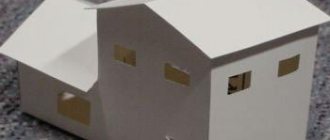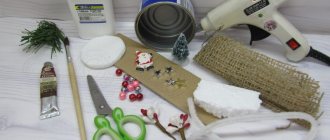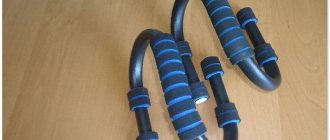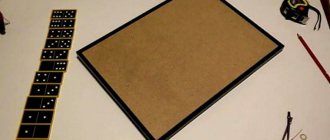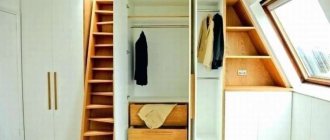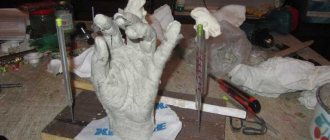What materials will be needed?
Almost anyone can make a banquette with their own hands. For a beginner in this business, it is better to start working with wood rather than iron, since it is much easier with such material. Wood materials do not require professional skills or significant experience. For the frame you will need wooden material - for example, chipboard or plywood. If the product will stand on legs, you will have to purchase wooden blocks.
Their size depends on the height at which the master plans to place the banquette. You can buy ready-made legs in a store or unscrew them from an old stool.
The structure must be secured using furniture corners, screws and glue. Foam rubber is used for filling, and any fabric you like is used for upholstery. But you need to understand that the fabric must be wear-resistant and very durable so that it does not wear out over time. If you are planning a carriage screed, then it is better to use not only foam rubber, but also padding polyester.
Required tools:
- drill;
- a screwdriver suitable for the selected screws;
- furniture stapler;
- sewing machine;
- screwdriver;
- sandpaper;
- furniture varnish.
Decoration
It is better to choose buttons to match the color of the upholstery. The quantity depends only on personal preference. You can diversify the bench with a decorative cover, which you can also sew yourself. All you need is skill with a sewing machine.
If you do not have cutting skills, then it is better to use a ready-made product pattern found on the Internet or watch a master class on making it yourself.
The capacity of the banquette is calculated: one person occupies an area of 45*55 cm.
The parts are cut out with a jigsaw and the edges are sanded.
For an Empire or Baroque style interior, you can make a carriage screed. This model looks very interesting and presentable.
The parameters of the hallway and the maximum possible dimensions of the product are determined.
If there are a lot of parts - partitions, shelves, back, it makes sense to make a pattern and then start cutting the plywood panel.
So you learned that making a banquette yourself, with minimal carpentry skills, is quite possible. The main thing is not to rush and pay due attention to each stage. Then the product will turn out neat and beautiful. This type of furniture will not only be useful in terms of comfort and space saving, but will also become a stylish and original addition to the interior.
Choose a model: with a back - quite difficult to implement with a minimum of experience, with shelves, drawers, on legs or supported on the sides, and so on.
Based on the dimensions of the seat, the parameters of the remaining elements are determined and a sketch is drawn.
Main stages of preparation
You can begin work only after creating a drawing of the banquette. Many may think that it is not needed, because the product is simple and does not require many structural parts. However, a drawing will be needed to determine the parameters of the product and compare them with the dimensions of the room in which it will be located. When choosing the type of product, it is better to choose a simple option. It is harder and longer to assemble a bench with a back or a drawer, so for the first time you need to limit yourself to a simple design. Having decided on the model, you need to draw a sketch. It is necessary to mark all the elements and their sizes. Wooden parts are cut out with a jigsaw, and rough edges are smoothed over with sandpaper. Then they can be varnished.
Stage two: cut the foam rubber
It is necessary to cut out parts from foam rubber that correspond to the size and shape of the bench cover. The foam part may be slightly larger in size than the wooden lid of the banquette, but it cannot be made smaller, because sitting on the furniture will not be entirely comfortable due to the uncovered hard edge.
You need to do the following:
- measure the wooden lid of the banquette;
- mark the foam rubber with a marker or felt-tip pen in accordance with the size of the lid;
- cut out parts from foam rubber along the marking lines.
Cutting foam rubber is not as simple a task as it seems at first glance. The material must be held, and the blade of the breadboard knife must be positioned strictly perpendicular. Of course, the length of the blade must match the thickness of the sheet of foam used. Heating the knife blade facilitates the process of cutting foam rubber, but at the same time causes melting of the material. Therefore, it is not worth making the cutting process easier by heating the blade.
When toothpaste is harmful to children: permissible age doses
25 children of a childless man: an extraordinary reunion
The star of the series “Sultan of My Heart” spoke about the choice of his future wife
How to make a round pouf with a carriage tie?
A carriage tie is a non-standard way to decorate furniture. It allows you to create three-dimensional surfaces with various patterns. Models decorated in this way are suitable for interiors in a neoclassical style or for modern designs.
Making a pouffe bench is quite easy; a novice craftsman will have no problems. To carry out repair work, a standard set is required:
- hacksaw;
- drill;
- hammer;
- jigsaw (electric is best);
- saw;
- nails and other fasteners;
- glue;
- construction stapler;
- paint, varnish, brushes.
A pencil, ruler and tape measure will be useful, with the help of which you will mark the necessary parts and their location relative to each other. The materials used are plywood and cardboard tubes. To cover the bench you will need fabric, as well as filling for the seat - for example, foam rubber.
Making a pouffe bench with your own hands:
- The tubes are cut into several parts so that they are the same length. Then plywood circles are cut out from which the base will be made. For these purposes, use a jigsaw or (if possible) a band saw.
- Tubes are attached to the base. First, the parts are placed around the perimeter, then the inside is filled with them. When all the tubes are glued, they are wrapped in a layer of foam rubber.
- The base is marked into squares. At the corners of which through holes are drilled (you will need a 10 mm drill).
- Upholstery fabric is threaded through the holes, and decorative buttons are sewn on the front side. The body of the wedge must be completely covered from the outside. At the bottom, the fabric is folded and attached to the plywood - using a construction stapler or nails.
- For the manufacture of curly legs, special equipment is already required - for example, a machine with numerical control. If it is not there, you can order the part in the store or buy it at a hardware store. The legs are painted and varnished for decoration and protection from rotting.
- The legs are attached using a drill and holes cut from the underside of the base.
- At the final stage, finishing work is carried out. The pouf is decorated with decorative rivets and crystals, which are secured with decorative nails of small diameter. Fastening elements are also used for additional fixation of the fabric: they are driven in around the perimeter of the bench every 15 mm.
Let's start production
We have decided on the main criteria and can begin a step-by-step analysis of creating a table. We will make a table from pine, since this is the simplest and most common option. But before assembly there are still a few preparatory steps left to do.
Let's prepare materials and tools
Assembling the table will not be difficult if all the preparatory work is carried out correctly. First you need to prepare the tools so as not to look for them during the work process. The arsenal should include:
- roulette;
- pencil;
- jigsaw;
- screwdriver or drill with a set of drills;
- construction compass;
- clamps;
- Sander.
If any tool is missing, be sure to purchase it or borrow it from a neighbor, because without proper preparation a good product will not come out.
You will also need the following materials:
- pine boards (for the lid);
- pine bars (for legs);
- self-tapping screws;
- wood glue;
- metal corners;
- wood varnish;
- wood treatment product;
- paint (if the design suggests).
Now that all preparations are completed, we can begin the main stage of work.
Build process
For a simpler and faster explanation, we will describe the work step by step.
The table elements are coated with a water-repellent agent before installation.
- Make a lid. To do this, attach the required number of pine boards with wood glue and secure them with clamps. After the glue has dried, draw a circle on the resulting square. Cut out a circle along the outline. This is the basis for our table.
We coat the sides of the boards with wood glue and apply them to each other, fasten the structure with clamps
Draw a tabletop circle using a construction compass
We use a sander to sand all surfaces of the countertop.
We cut the required length of timber for the legs and round all the corners
We attach a metal corner to each leg on three sides, always in the same plane
We fasten the legs to the tabletop with self-tapping screws
We make jumpers from bars of the same or smaller size and attach them to the legs with self-tapping screws
We treat the surface of the table with varnish
We hope that now you have no questions about how to make a round table. As you can see, it's quite simple. All that remains is to put the finishing touch on it by choosing any design. By leaving the product unpainted, you will emphasize its natural beauty. This option will be better than others, and recently it has become increasingly popular. Do not forget that the design must be specified in the preliminary work plan. This will help avoid surprises and make the process much easier.
Master class on making a soft wooden model
The basis of such furniture is a wooden frame, which is covered with fabric and complemented with a seat with filling. The question of how to assemble a banquette or other products worries many. This is not so difficult to do, and the stages of work on different pieces of furniture will be similar. First, a drawing of the future furniture is drawn.
You can take an existing scheme as a basis or make a completely original one, but the first option is suitable only for those who already have experience.
It is best to create a project in special programs on a computer. This will allow you to see the three-dimensional model and understand how it will look in real life.
The SketchUp application is suitable for this purpose.
To carry out calculations, determine the actual dimensions of the banquette (based on the size of the room and the place where the piece of furniture will be located). A drawing is required in order to clearly determine the number of beams, consumables and fabric that will be used to create furniture.
After the preparatory stage, the actual repair work is carried out. Homemade banquettes are conventionally divided into two types:
- Firstly, they can be made from scratch.
- Secondly, there is the opportunity to make them from unnecessary furniture.
For the last option, an old coffee table will do. A low model with twist-off legs is best.
Before work, you should check whether it can withstand human weight.
The procedure is as follows:
- A square or rectangle of the same size as the tabletop is cut out of foam rubber. 2.5 cm is left along the edges of the material. Ordinary scissors or a construction knife are suitable for cutting foam rubber.
- If you use two layers of material, the bench will be softer. The sides with relief are placed inward and glued.
- The legs are unscrewed from the table and foam rubber is glued to the base. The dimensions of the parts must match completely, otherwise the base of the bench will be uneven. Press down on the filler as hard as possible.
- The next step is to cut out the second lining (using lavsan, non-woven fabric or thin foam rubber). It should be larger in size than the filler. Next, the parts are glued together.
- When finishing a banquette, use a piece of fabric cut with allowances of about 2.5 cm. The upholstery is attached using a construction stapler or decorative nails. The fabric is stretched along the edges, diagonally and towards the corners: it should adhere to the base as tightly as possible.
The edges are secured last. The material is smoothed out as much as possible using an awl or screwdrivers; As a result, there should be no folds left. For the bottom, anti-dust wear-resistant fabric is suitable, which is also attached with staples to the base. Before fastening, the edges of the material are folded.
A brief excursion into history
An ottoman or ottoman is a low item that belongs to the category of upholstered furniture that is designed for people to sit. It is also sometimes used as a footstool, or may even just serve as a decoration for the room. The shapes of the products are varied, but most often there are square and round ottomans, completely covered with upholstery fabric, except perhaps for the legs, which are usually made of wood.
Vintage delightful ottoman
Before we talk about how to make such a piece of furniture ourselves, let's study the history of this product. So, the history of the ottoman and furniture in general are very closely intertwined. The very first ottomans appeared in Ancient Egypt, and a little later they began to be used in rich homes in Greece and Rome.
English ottoman stand
Over the many years that ottomans have existed, they have changed dramatically. Previously, leather, fur, wood, and expensive fabrics were used to make poufs. Sometimes the pouf could have a beautiful design - such beautiful products can still be seen in museums. But gradually the popularity of richly decorated poufs faded away (around the Middle Ages). This was due to the promotion of an ascetic lifestyle, which the Catholic Church was actively involved in. Rougher and harder seating options began to appear, and sometimes people even sat on simple benches or chests. Separate chairs were only used by the nobility.
Antique ottoman with legs
Around the 18th century, beautifully decorated upholstered poufs came back into use in Europe. And this was facilitated by the fact that aristocrats could afford to decorate their homes with exquisite products, and asceticism faded into the background. Elegant poufs became popular among ladies who did not have to wrinkle their luxurious dresses to sit on them. So the ottoman was a frequent “guest” at the ball.
The pouf in its modern form, as we know it now, appeared around the end of the 19th century in France. And since then it has been and remains a popular piece of furniture.
You can make a pouf with your own hands quite simply
Banquette made from old furniture
An excellent option for a spacious entrance area: a comfortable bench is made from scrap materials and requires almost no cost.
You can leave your bags on it after coming home, as well as change your shoes. Even a beginner can handle the production.
Tools and materials
To create a banquette you will need:
- An old coffee table, cabinet or sideboard with legs, the upper part of which has become unusable or is simply not needed.
- Foam rubber.
- Scissors.
- Spray glue.
- Roulette and ruler.
- Lining fabric.
- Durable upholstery fabric.
- Thin material to protect the bottom, for example calico.
- Furniture stapler.
- Hammer.
Banquette repair prices
A banquette is not considered an essential piece of furniture. But only until you get used to it. And then it becomes difficult to do without a banquette, because it is so appropriate in the hallway, so useful in the living room, so cute in the bedroom and so necessary in the office! In the museum and theater, on the veranda and on the balcony, in the office and in the library, the banquette honestly fulfills its small share of space, giving convenience and relaxation to everyone. But then the day comes when the banquette becomes unusable. The legs become loose, cracks appear on the wooden parts and, worst of all, the upholstery deteriorates. However, you should not make an impulsive decision to dispose of the product in a landfill. It's better to call . What will it give? New life for your furniture!
Step-by-step instruction
The main value of the original furniture is the unscrewing legs. The base for the bench must support the weight of a person. If it is not strong, you can purchase a furniture board and work with it. Let's start assembling:
1. Unscrew the legs and measure the base. We cut the foam rubber to these dimensions with a margin of 2.5 cm around the perimeter.
2. For softness, you can lay two layers of foam rubber and glue them together. Apply glue to the tabletop and lay it on pieces of foam rubber. We press.
3. We cut the lining fabric to the size of the tabletop, leaving allowances. Glue it to the base, laying it on top.
4. We cut the upholstery fabric so that the allowances cover both the foam and the lining. Smooth it out from the center to the edges. Gradually stretch the fabric, securing it with a furniture stapler, 3-4 staples each. When the upholstery becomes perfectly smooth, we go through the perimeter with a stapler again.
5. We handle the corners as carefully as possible, tucking them so that there are no wrinkles. This requires patience and professionalism.
6. We cut off the anti-dust fabric, turn in the corners and fasten it with staples so that the edges are not visible from the outside. We screw the legs.
7. Legs can be decorated at your discretion. The elegant banquette is ready:
Option to create a new ottoman from scrap materials
Many professional craftsmen who can restore anything have come up with an amazing way to make an ottoman from a car tire. Procedure:
- Remove the iron disc from the old tire.
- Cut a wooden surface to the size of the tire, which will serve as the basis for the future ottoman.
- Individual parts need to be attached using self-tapping screws, and string should be glued to the surface. When the surface is ready, treat it with a special varnish, due to which the ottoman will take on an attractive appearance.
All the proposed options will allow you to create new furniture, while the financial costs are minimal. Regardless of what you decide to restore, it is worth mentioning the benefits that the owner of the furniture gains after completing the process.
Banquette with hinged lid
Useful and beautiful bench-banquette in a classic style with internal storage space for small items. Made from plywood, boards, baluster legs, polyurethane foam and fabric.
Tools and materials
To make a structure from scratch you will need:
- Plywood 2 pcs.
- Wooden balusters or ready-made furniture legs 4 pcs.
- Narrow boards to fit the size of the desired bench and legs.
- Jigsaw.
- Fasteners, wood glue.
- Nails and hammer.
- Screwdriver and screws.
- Sandpaper or sander.
- Varnish, paint or furniture wax.
- Polyurethane foam or foam rubber.
- Lining (batting).
- Upholstery fabric.
- Subtle matter.
- Furniture stapler.
- Furniture hinges.
Step-by-step instruction
Let's get started:
1. We take the necessary measurements for our hallway. We prepare the wooden elements: two sheets of plywood for the bottom and lid, two short and two long pieces of boards.
2. We fix the balusters to the future box using glue, screws and fasteners.
3. As a result, we get the following frame:
4. We take measurements and cut holes for the legs in the plywood. We secure the bottom of the box with nails.
5. Cover the bench with paint. If you want to leave a wood grain, stain, varnish, wax or wood oil are suitable.
6. Let's start creating the lid. Glue the polyurethane foam to the plywood.
7. We wrap the structure with batting, attach it with a stapler and cut off the excess.
8. We stretch and fix the upholstery. We protect the bottom with thin material.
9. We connect the base and lid with furniture hinges.
10. An aesthetic and neat banquette will decorate any interior.
Upholstery of the bench with foam rubber and drapery with fabric
I wanted a very soft bench that would be comfortable to sit on. Therefore, one layer of foam rubber was not enough for me.
On the second layer of upholstery, I used the same technique to make holes for further quilting.
Thus, the base was already ready for final processing. What kind of fabric do you think I bought for the upholstery? Exactly the kind about which Ellochka the cannibal would say: “Shine!”
Here is my fabric and prepared buttons for quilting
A little about buttons: you just need to pick a few of the same size with the stem. These buttons must be covered with the same fabric that you will use for upholstery, and a strong thread, or, even better, a nylon cord, must be threaded through the leg. It will definitely not burst during use.
The last stage is installing the legs. I attached them on one side to the base frame, and on the other - with a metal corner to the plywood itself
I used all the foam for the bench. Without undue modesty, I will say that it turned out very well, and most importantly, it was convenient. I don’t tell anyone what it’s made of or, in general, that it was made with my own hands.
Original work, boy, this is not a tea strainer for you
Related article:
A woman's answer to Ostap Bender: the second life of a broken chair. How the girl managed to remake her grandmother’s old chair into modern furniture, what was needed for this, the process of work, photographs and a step-by-step description of the process - read in the publication.
Tatyana, you really managed to achieve a great result! Such a banquette will decorate any boudoir and become a bright accent in the interior. It is difficult to supplement your material with such detailed photographs with something worthwhile, but here is a short video with recommendations for furniture upholstery that may be useful to our readers:
Don’t forget to leave your comments on the article and share your own experience in the “It’s Not a Woman’s Business” section. What can you do? Maybe you have original products or unusual experiences? We are waiting for your photos with detailed descriptions!
Ottoman in the interior with different designs
The choice of ottoman option largely depends on the type of room. For the hallway, you should choose frame models with a rigid base. Cylindrical designs help smooth out the angularity of the room. Models with soft upholstery are suitable for a comfortable stay in the living room. To create an accent, you should choose a product made from a material with a bright color palette.
Round poufs are ideal for small spaces. Rectangular ones are recommended to be placed near armchairs and sofas. The product for the kitchen must be made of moisture-resistant fabrics. For a child's room, you need to choose safe, comfortable and soft models.
We hope that our master classes will help you understand in detail how to make a pouf with your own hands from simple materials. Homemade products will add comfort and coziness to any room. Original seats are suitable for different interiors.
Drawings of ottomans
It is inconvenient to make ottomans with your own hands from a photo - drawings are usually used for work. First you need to determine the shape of the product; for this you use your imagination or simply take popular options. There are classic round, square, rectangular ottomans and lamzak-type bags (pancake- or pear-shaped).
Important! The presence of a back on the ottoman is not necessary, but it will increase the comfort of the finished structure. The design of a standard rectangular ottoman with a lid is the simplest
The size of the product depends on personal wishes. Be sure to immediately think about a cover for the ottoman - preferably removable and washable.
Soft ottomans are universal, the main thing is to strictly follow the dimensions in the drawings. An ottoman with a hinged lid is a more functional model, which will provide additional storage space.
Banquette in the hallway yourself: step-by-step instructions
For the correct design of a bench, it is better for a novice craftsman to resort to the instructions: first you need to construct a round or square seat from plywood and chipboard without corners. Making corners will not be easy for a beginner. If the ottoman needs legs, they are attached to the bottom of the structure with corners, screws and a screwdriver. When creating a model that rests on the armrests, they are cut out in advance before assembling the pivots. They must have special end holes.
You can design carved legs using a hand router. The seat will be soft with foam rubber of the correct shape and fasteners at the bottom of the product. It is better to first glue the canvas to the bottom of the model, and then connect the canvas with a foam roller. To upholster an ottoman, you need to make a layout in advance by throwing fabric over a pattern and stitching it with staples.
- Molding of parts with assembly should be carried out in several stages, since assembly is a complex and responsible job. To avoid damaging the ottoman, you must follow the rules. For example, plywood needs to be drilled with self-tapping screws. The lid should be made evenly over the area of the body, so that later it will not be difficult to upholster the ottoman.
- Assembling the frame must begin by assembling the workbench from blanks and connecting them using self-tapping screws. The finished bottom is attached to the base of the frame. Then, using stain, the color of the structure is made from the inside.
- The sink should be about a few centimeters larger than the base of the pouf. In this case, the parts should be connected and covered with paint texture. To mount the lid, you need to cut out hinges 5 cm smaller than the sides of the body. This is necessary to ensure that the fabric does not tear during tying. The loop is secured to the white fabric and then attached to the sides of the pouf. To make it convenient to perform these actions, the bench must be turned upside down.
- The shell starts at the top. To do this, create the required shape of the lining and fix it with glue on the outside of the lining. If the ottoman does not have a top, foam rubber or other upholstery is attached on top of it. Then the sides are sheathed with this material. Finally, if desired, the product is decorated with decorative elements, for example, tassels, rhinestones, a carriage or a fabric bow.
- If you are creating a banquet with a large number of details, you should make a pattern, which will later form a decorative element of the interior.
Making a bench is not difficult. Everyone will do it to their own taste. The main thing is to do everything according to the scheme and taking into account all the advice of experienced craftsmen, giving preference to fabrics, cut, patterns and other simple materials.
What do you need for assembly?
In addition to the material, we will also need a tool: a tape measure, a hacksaw, a screwdriver (drill), a hammer, a stationery knife, a stapler and a paint brush. It is better to do all work on cutting material for a frame on a workbench; at worst, a temporary table assembled with your own hands will replace it for you. As consumables you should select:
- screws length 15 and 50 mm;
- piano type hinge;
- drill for wood or metal with a diameter of up to 3 mm;
- staples 15 -25 mm;
- paint (stain).
The same thing with foam rubber: five centimeters will be enough, it’s better to spend the remaining money on beautiful and expensive velvet. Yes, and for the base we will need a certain number of boards (bars) with a cross-section of 25 x 100 mm.
In order to assemble the bench on your own, you first need to cut the plywood according to the templates. This needs to be made from cardboard or fiberboard for the sides and lid (seat). Based on the purpose of the bench, its dimensions may vary. So, for a kitchen it is desirable to have a height of 50-60 cm, and for a hallway a low height of 40 cm. Based on this parameter, templates for the sidewalls should be made, taking into account a 10 cm stand (platform). After which you can finally decide on the dimensions of the lid and bottom.
How to update and cover a model with a backrest with leather: step-by-step instructions
The coffee table is not the only piece of furniture that can be given new life. You can also remake an old set, or rather, part of it - a bench with a back. The updated banquette will fit into the new interior after renovation or become its basis.
First, leatherette is selected for the covering, as well as plain fabric for the lining. The size is calculated depending on the area of the furniture (taking into account that there should be room for allowances). The set of tools will be similar to those used to make other types of furniture.
Creating a bench with a back:
- Old furniture is disassembled into parts, upholstery and filling are removed. You can use a flathead screwdriver to remove the staples.
- Parts for the seat and back are cut out of foam rubber. If there is a drawer inside, the lower part is made half a centimeter smaller.
- Fabric for lining is laid out on the floor. There is a filler and a wooden seat on it. The materials are attached to the base using a stapler.
- It is very important that the fabric is stretched as tightly as possible.
- The wooden frame can be painted or stained. First, one layer is applied, after 12 hours - another. When working with stain, place an oilcloth on the floor and put gloves on your hands, since it is difficult to wash off. At the final stage, leatherette is inserted into the side and front backrests of the bench, after which the parts are attached to the base.
- Leatherette is nailed on top of the fabric around the perimeter of the wooden parts. The edges of the upholstery are folded and carefully fixed from the inside.
- If desired, the product is decorated with pillows. You can also sew them yourself by choosing materials of a suitable shade.
- Pillows can be designed in a classic style, or they can be made in the form of animals or objects.
Different materials for indoors and outdoors
The pillow you use at home is definitely not suitable for outdoor use. Even the most durable fabric that is used to create home furniture will not be as durable in other conditions. This is due to the influence of external factors on the material. Therefore, when choosing a material for cushions for an outdoor bench, you should pay attention to its resistance to temperatures (high, low or sudden changes), air humidity, possible precipitation and even sunlight.
Unusual ideas
Talented craftsmen have long been using old products that have either become unusable or simply lost their relevance to create new pieces of furniture. Therefore, it is not at all necessary to create a product from scratch; you can restore an unnecessary coffee table or stool. The main thing is that you have enough imagination for it. An interesting option for creating a banquette is to use an old wooden box. To do this, you need to remove the locks and hinges from the box. If there are any irregularities, they need to be sanded. The box itself can be painted in a bright color, and the lid can be covered with leather (previously with foam rubber). The inside of the box also needs to be tidied up: sanded and painted.
A banquette made from old chairs will look original. To do this, take two chair backs with rear legs and connect them using two bars. The bars need to be secured with corners and self-tapping screws. Then a seat is made from plywood and covered with foam rubber and fabric. A bench made of plastic bottles is this year’s trend. To make such a product, you will need to prepare approximately 40 bottles, cardboard, tape, glue and foam rubber. The bottles are fastened to each other with tape, and then glued to the cut cardboard on both sides: on the bottom and top. After this, the structure is covered with foam rubber and covered with fabric. An old shoe rack can become a multifunctional product. To do this, it needs to be sanded and painted. Then at the top you need to make a seat from a synthetic padding pillow, which is first placed in a cover and attached to the shelf.
DIY transformable ottoman
For a transformer type model, use a pair of foam rectangles 20 cm thick. For cutting, take scissors, a sharp knife, a pencil, paper, medium-density fabric and Velcro tape.
Procedure:
- Make patterns for foam rubber and upholstery.
- Pin and stitch the blanks, align the outer corners.
- Fold the long sections of the ribbons so that they meet in the central part, fold, and stitch again.
- Iron the seam allowances, pin again and stitch the remaining parts of the blanks.
- Unscrew the cover and insert it inside the pillow.
The basis for the transformer is a regular pillow that can change shape thanks to the soft foam layer. You can combine a pillow and bottles.
Decorations
To update old furniture and make a banquette out of it, you don’t have to spend a lot of time and effort. The main thing in such a product is softness and the availability of storage space (drawers, shelves). When the transformation of old furniture is already completed, it's time to think about decorations. When translating your ideas and fantasies into reality, you should not limit yourself. After all, the finished banquette should please the eye, and not stand sadly aside. Therefore, it is important to decorate it in such a way that it simultaneously catches the eyes of guests and harmonizes with the interior.
A product made in a classic style is suitable for the hallway. This is especially important if you also need a shoe rack. The purpose of the bench in this case is more for storing shoes than for comfortable sitting on them. At the same time, it should be noticeable and covered in leather or leatherette. In a children's room, such a product can have any style. The main thing is that he takes into account the situation. For a girl, the banquette can be decorated with velvet and voluminous flowers. It will be very interesting if the cover is knitted by mom. For a boy, a product in the shape of a soccer ball will be original. It will be even more interesting if there is space inside to store toys.
In the bedroom, a banquette is often used for beauty in front of a mirror or for reading. Usually it is covered with fabric of calm tones.
Often banquettes are made specifically for weddings. Guests can sit on them very easily and simply. All banquettes and poufs at this event must be made in the same style. So they look very nice against the background of the hall. Satin ribbons or embroidered patterns will look very gentle on them. Of course, this is painstaking work, but such products look impressive.
What can it be made from?
To create a pouf, almost any materials, even waste materials, can be used. In stores, most often they sell wood-based products, covered with fabric or leather and with a soft padding in the form of foam rubber and similar materials. Moreover, the gasket can be located either only on top, or along the entire surface of the ottoman.
If we talk about pouffe pillows, they do not have a strong solid frame, they are made entirely of fabric and have a soft filling. They are usually used for recreation and are not placed in hallways.
You can make a beautiful and comfortable ottoman from old leather items
The best materials for a pouf in the hallway are leather, leatherette or eco-leather. They are especially relevant if there are children or a dog in the house. Any dirt that may appear on the upholstery of the pouf in the hallway can be easily removed by wiping the product with a cloth. However, this material differs in that it can be easily damaged by sharp objects. By the way, leather poufs fit perfectly into almost any interior - a lot will depend on the decor. But they give the room some officiality. You can also cover the pouf with thick furniture fabric such as flock. The most important requirement is that the fabric must be dense and not prone to damage.
The base of a homemade pouf is usually wood or its derivatives (for example, plywood, chipboard). But some craftsmen have figured out how to make such seats from old car tires, plastic bottles, wooden fruit crates and similar materials that are usually thrown away.
Pouf from a box
As for the legs, they are usually also made of wood. But you can also screw on the wheels. It is important to consider what material the floor is made of. Some types of coatings are easily damaged by sharp corners.
Important! Metal legs for a pouf are not the best option. They can negatively affect almost any type of coating.
Pouf cube
As for the color scheme, you need to focus on the shades that were used to create the interior. For a dark hallway, the best option is a light ottoman, and vice versa. In general, an ottoman can become a bright decorative element in a room and significantly decorate it.
Do-it-yourself furniture upholstery
The method described above allows you to obtain a product with a smooth surface. But if on two- or three-seat models this option is quite presentable, then a single-seat banquette looks boring. A pouf with a carriage tie looks much more interesting.
To do this, you will need the same tools, including a hand cutter, softer and thinner fabric, since it needs to be folded, and large buttons covered with the same fabric.
- The soft filling here consists of two parts. After the foam rubber is glued to the bottom, cut out the same piece of padding polyester.
- With some skills, the places where buttons are attached can also be marked on foam rubber. But it is still advisable to make a pattern: a sheet of paper of the appropriate size, on which the number of fastenings and the shape of the folds are calculated. Usually these are diamonds, but you can get more complex shapes. Through holes are drilled at the marked locations.
- Lay padding polyester and use a hand cutter to cut out holes for buttons.
- The fabric is then placed on the seat. It should be laid evenly, but without tension, as it will form folds when fastened. Then buttons are sewn to the fabric in the marked places.
- Cords or strong strong threads are attached to the buttons, pulled with a crochet hook into the holes and secured with a stapler.
- The folds are straightened out, and the fabric can be steamed if it has become wrinkled during upholstery.
This product looks very decorative and is quite simple to make.The next master class will teach you how to sheathe a banquette with your own hands using the carriage screed technique:
Basic requirements for ottomans
There are no requirements as such when choosing an ottoman for the hallway, but there are certain recommendations that need to be followed so that the product does not disappoint the owner.
- The ottoman should match the style and shape of the interior.
- It should be mobile and lightweight if you plan to move it frequently.
- It is better to choose environmentally friendly materials so that there is no risk of getting an allergic reaction or any disease. This primarily applies to people who have weak immunity or are allergic to anything.
- It is important to consider the size of the free space in the room. The ottoman should complement the hallway, and not occupy the last free corner and disturb everyone.
- As for the type of pouf, it is important to take into account the free space, the wishes of the owner of the hallway and other factors.
- You should not make an ottoman with sharp corners, especially if children live in the apartment. In any case, sharp corners increase the risk of injury to both children and adults.
Ottoman in the hallway - photo
Required Tools
To implement your idea you need to have:
- Hammer, building level, screwdrivers;
- Screwdriver and drill, as well as a jigsaw;
- To process a wooden surface you will need sandpaper;
- Stapler for mounting fabric elements;
- Sewing kit, decorative accessories.
Just in case, prepare stain or paint materials.
conclusions
Making a banquette for the hallway with your own hands is quite simple if you know the sequence of work and accurately determine the shape of the product. Materials are selected based on the style of the room and the intended purpose of the banquette. Don't rush while working. This will help avoid serious mistakes. As a result, you can get a beautiful and practical structure. Such furniture is not only useful for guests to relax, but can also serve as a storage place for various small items. With the right choice of banquette style, it becomes a decoration for the hallway.
Why do you need a banquette?
A banquette is a kind of stool, or a small bench with a soft seat, usually without a back. Sometimes you don’t even think about it, calling it by all its boring names – chair, chair. And its purpose, like all furniture of this kind, is to sit on it. In the kitchen this question is more relevant than in other rooms. It's always nice to sit on a soft chair and drink a cup of coffee.
Beautiful carved bench for the kitchen
There are also banquettes with a drawer for the kitchen. The entire lower part of the stool is covered with plywood and thick fabric, forming a small box. This simple solution can be used to store small household appliances or other kitchen utensils.



